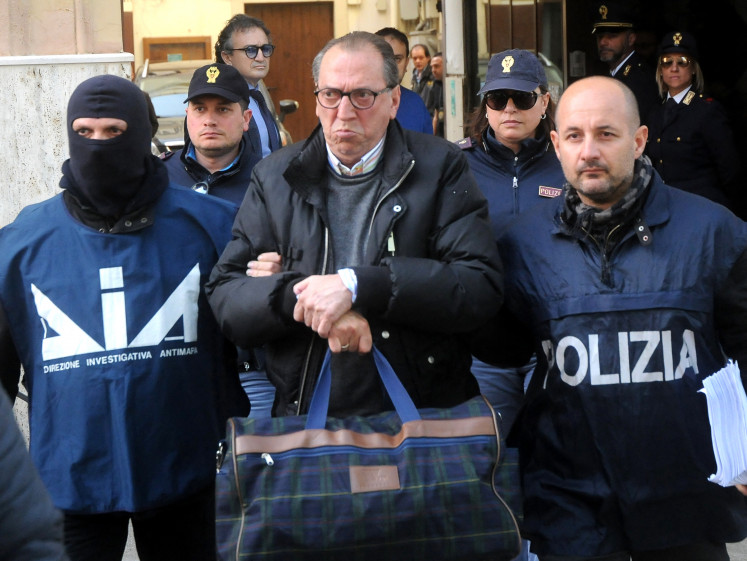Popular Reads
Top Results
Can't find what you're looking for?
View all search resultsPopular Reads
Top Results
Can't find what you're looking for?
View all search resultsTwo Viking relatives reunited in Denmark after 1,000 years
One of the Vikings died in England in his 20s in the 11th century, from injuries to the head. He was buried in a mass grave in Oxford.
Change text size
Gift Premium Articles
to Anyone
 Two skeletons lie in a showcase at The National Museum of Denmark Wednesday, June 9, 2021 in Copenhagen. The skeleton of a Viking-era man in his 50s from central Denmark will be reunited in the exhibition 'Join the vikings - the raid' later this month with a relative who was killed in England more than 1, 000 years ago in a massacre when an English king ordered the slaying of dozens of Danish settlers. A museum said Wednesday that archaeologists and scientists on both sides of the North Sea have established the relation between the men thanks to DNA technology and they were likely either half-brothers or nephew and uncle. One was a farmer in Denmark, the other likely a raider. (AFP/Ida Marie Odgaard)
Two skeletons lie in a showcase at The National Museum of Denmark Wednesday, June 9, 2021 in Copenhagen. The skeleton of a Viking-era man in his 50s from central Denmark will be reunited in the exhibition 'Join the vikings - the raid' later this month with a relative who was killed in England more than 1, 000 years ago in a massacre when an English king ordered the slaying of dozens of Danish settlers. A museum said Wednesday that archaeologists and scientists on both sides of the North Sea have established the relation between the men thanks to DNA technology and they were likely either half-brothers or nephew and uncle. One was a farmer in Denmark, the other likely a raider. (AFP/Ida Marie Odgaard)
S
eparated for 1,000 years, two Viking warriors from the same family were reunited on Wednesday at Denmark's National Museum, as DNA analysis helps shed light on the Vikings' movements across Europe.
One of the Vikings died in England in his 20s in the 11th century, from injuries to the head. He was buried in a mass grave in Oxford.
The other died in Denmark in his 50s, his skeleton bearing traces of blows that suggest he took part in battles.
DNA mapping of skeletons from the Viking era -- from the eighth to the 12th century -- enabled archaeologists to determine by chance that the two were related.
"This is a big discovery because now you can trace movements across space and time through a family," museum archeologist Jeanette Varberg told AFP.
Two of her colleagues spent more than two hours on Wednesday piecing together the skeleton of the man in his 20s, from the remains freshly arrived from Oxford.
The 150 bones have been lent to the Danish museum by the Oxfordshire Museum in Britain for three years.
The historical consensus is that Danish Vikings invaded Scotland and England from the late eighth century.
The younger of the two men "may have been cut down in a Viking raid, but there is also a theory that they (the skeletons in the mass grave) were victims of a royal decree by English King Ethelred the Second, who commanded in 1002 that all Danes in England should be killed," Varberg said.
It is very rare to find skeletons that are related, though it is easier to determine the relationships for royals, according to Varberg.
While the two were confirmed to be relatives, it is impossible to determine their exact link.
They may have been half-brothers, or a grandfather and grandson, or an uncle and nephew.
"It's very difficult to tell if they lived in the same age or they differ maybe by a generation, because you have no material in the grave that can give a precise dating. So you have a margin of 50 years plus or minus," Varberg said.








